Ocean observation
Hakuho-maru cruise (May 2014) : Recovery of sediment trap at K2
Long-term change of Lithogenic Materials in the western subarctic gyre (increase of eolian dust?!)
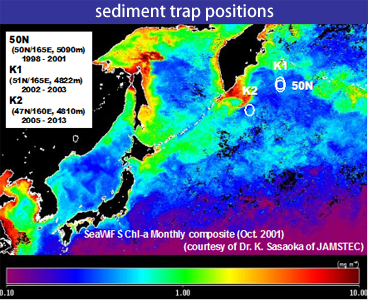
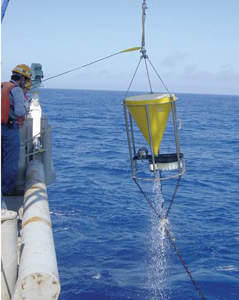
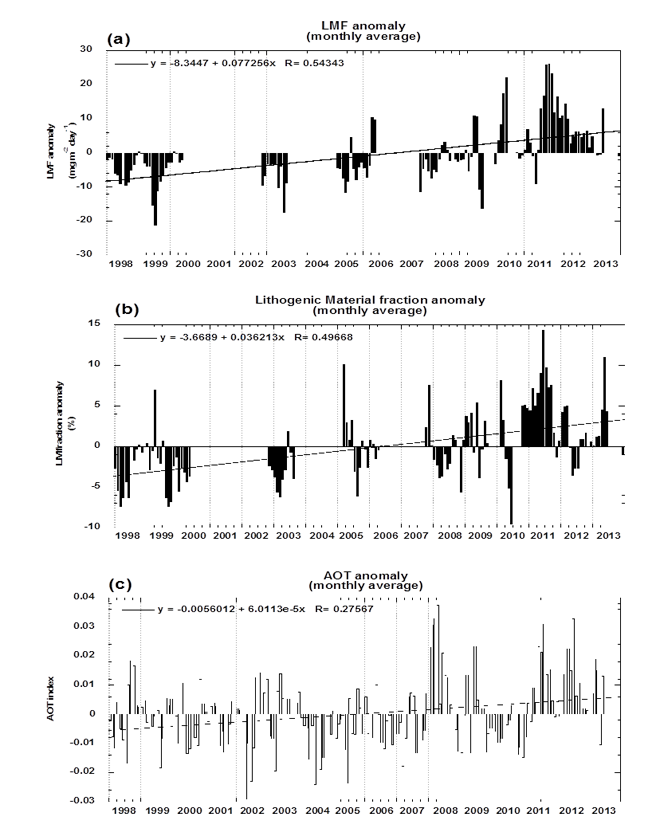
Kaiyo cruise (June 2014): Start of KEO Time-Series observation
Increase of chl-a after pass of typhoon
Typhoon FENGSHEN
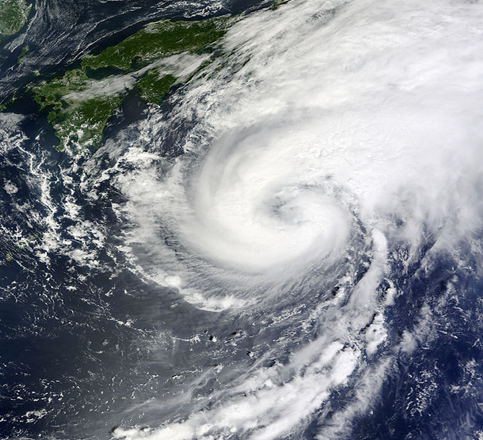
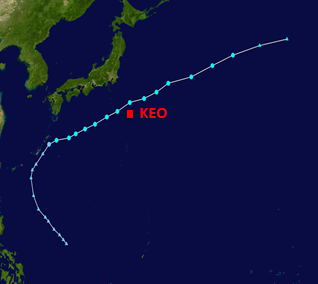
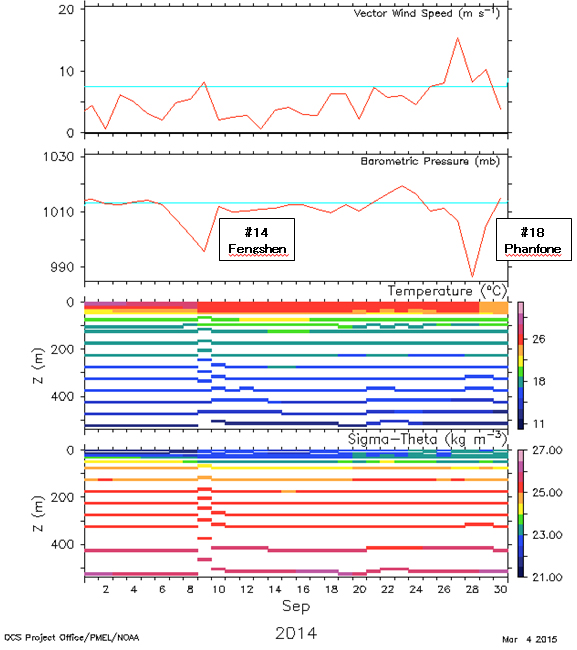
Pre- and post-Fengsheng MODIS SST
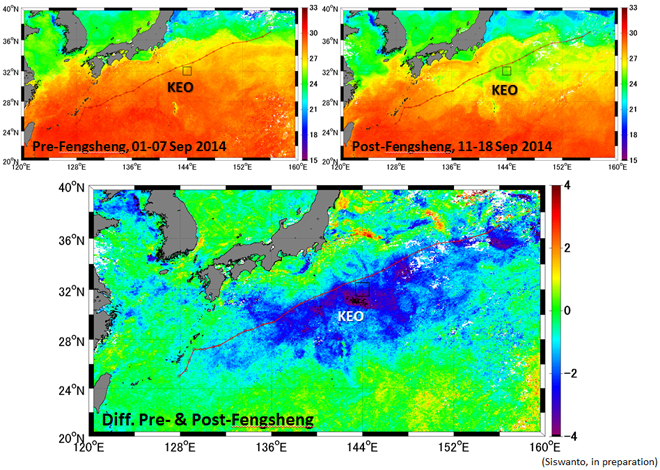
Pre- and post-Fengsheng MODIS Chl
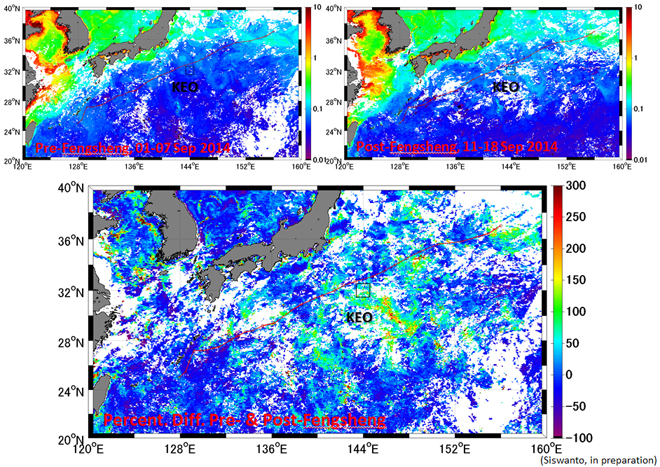
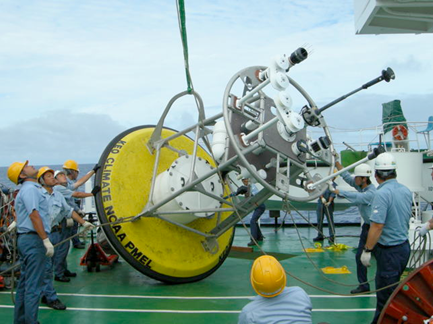
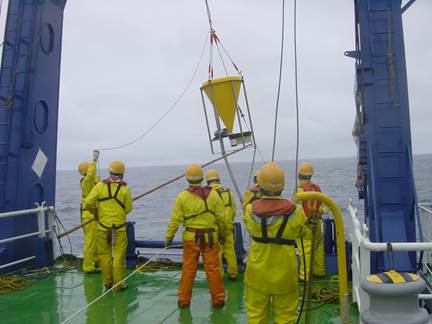
Shinsei-maru cruise (Oct. 2014): Recovery / Re-deployment of sediment trap at F1
Ongoing lateral transport of radiologically contaminated sediment
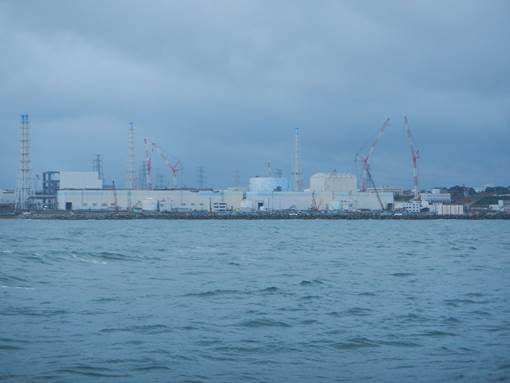
(1.5km off FNPP1, Oct 2014 KS-14-20)
Publications
Publication 1: Sinking velocity of particulate radiocesium
Honda, M. C. and H. Kawakami: Sinking velocity of particulate radiocesium in the northwestern North Pacific, Geophysical Research Letters, 41, 3959–3965, doi:10.1002/2014GL060126. (2014)
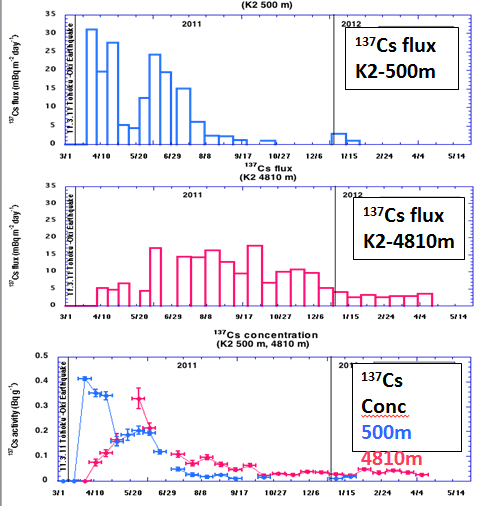
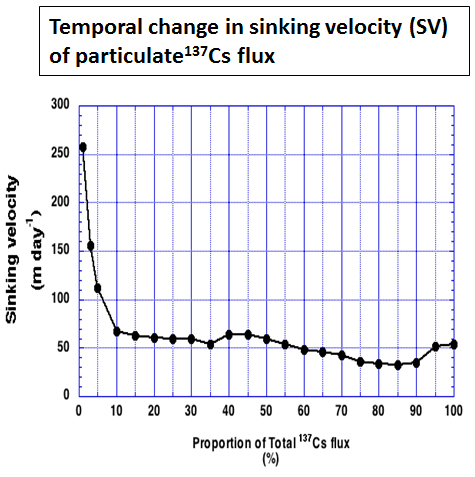
■Early and small fraction: refractory (“Cesium Ball”?!)
■Most of particulate 137CS: labile
(Sulfate ?!)
Publication 2: Light limitation of Primary Productivity in the western subarctic gyre
Matsumoto, K., M. C. Honda, K. Sasaoka, M. Wakita, H. Kawakami, and S. Watanabe: Seasonal variability of primary production and phytoplankton biomass in the western pacific subarctic gyre: Control by light availability within the mixed layer. Journal of Geophysical Research: Oceans 119, doi:10.1002/2014JC009982. (2014).
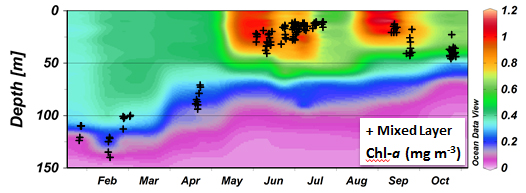
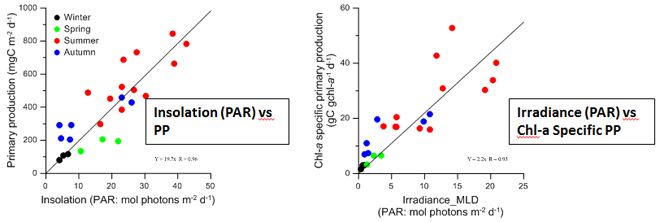
Publication 3: Factors controlling phytoplankton variation and seasonal bloom onset
Siswanto, E., K. Matsumoto, M. C. Honda, T. Fujiki, K. Sasaoka, and T. Saino. Reappraisal of meridopnal differences of factors controlling phytoplankton biomass and initial increase preceding seasonal bloom in the northwestern Pacific Ocean. Remote Sensing of Environment 159, 44-56 (2015)
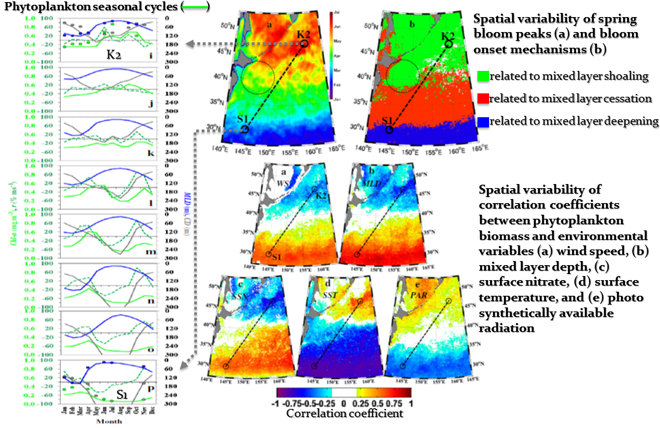
Science plan in FY2015
1. Ocean observation
(1) NOAA-PMEL cruise (2015.8.27 ~ 9/12):
Recovery / Redeployment of KEO Sediment trap
□ Change in settling particles after typhoon?
□ Discussion about other triggers including meso-scale eddy and eolian dust
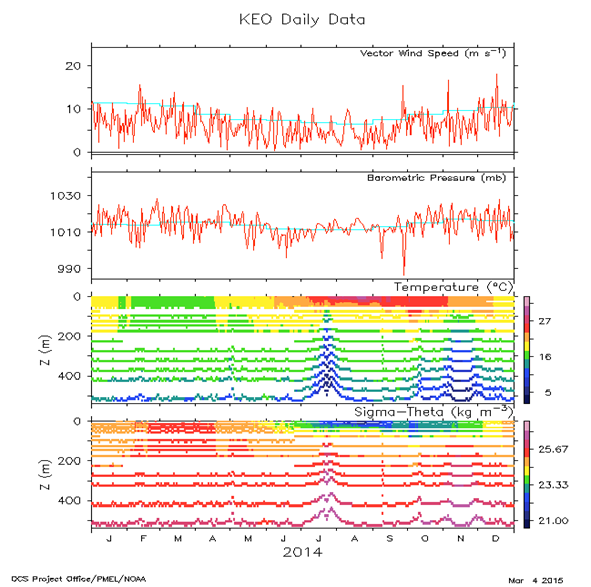
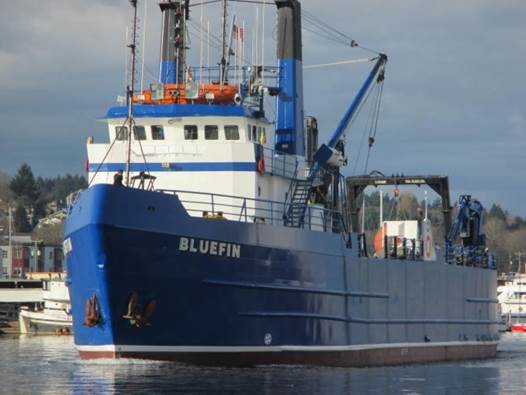
(2) Shinsei-maru cruise (KS-15-13: 2015/10/7~10/16)
Recovery / Redeployment of F1 Sediment trap
□ Investigation of Fukushima-derived radionuclides
(3) Eastern Indian Ocean cruise(MR15-05: 2015/12/23~2006/1/28)
□ Observation of basic environment regarding aerosol and ecosystem for future IIOE-2 related Bay of Bengal Cruise
2. Publication
□ JO K2S1 project special issue
3. Sample / Data analysis
□ Dissolution experiment of aerosol
□ Analysis of REE and mineral in sediment trap sample